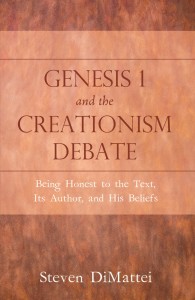The use or non-use of the name of Israel’s god, Yahweh, is not the only distinguishing feature between the Yahwist and Elohist traditions when it comes to how they portray and conceptualize the deity. Right from the Yahwist’s opening creation account in Genesis 2:4b-3:24, Yahweh is depicted in stark anthropomorphic terms. Yahweh forms man from the dust of the earth, presumably with his hands, breaths into the man’s nostrils, plants a garden, takes and puts the man in the garden, commands the man, forms animals from the ground, builds a woman from the man’s rib, walks in the garden, calls and speaks to his creation, makes skins of garments for the human pair, and finally puts the human pair outside the garden. This type of anthropomorphism, that is presenting a deity in human terms, is only found in the Yahwist source and for the most part attests to its antiquity. Yet the anthropomorphic portrait of the deity in the Yahwist tradition goes even further than this. The Yahwist depicts his god repenting, relenting, grieving, and raging with anger on numerable incidences. He often talks face-to-face with the patriarchs, walks side-by-side with them, and even eats with Abraham on one occasion. More surprisingly, the Yahwist shows no indication that this conception of the god is problematic. The anthropomorphic Yahweh is merely one god, Israel’s god, among a vast sea of other anthropomorphic deities from the ancient world. In fact there is an old tradition now preserved in Deuteronomy that states that the high god of the ancient world, El, assigned to each nation a god of its own. Yahweh was assigned to Israel (Deut 32:8-9).
Indeed, the anthropomorphism of the Yahwist becomes extremely problematic for later scribes, who either blatantly disagreed with the Yahwist’s portrait of the god or understood the godhead on a higher theological plane. The Deuteronomist for example, puts forth a conception of Yahweh that is without form; no image can be formed of him, and he only communicates to mortals as a formless voice from the heavens. In the Deuteronomic tradition such anthropomorphic conceptions as found in the Yahwist text become a polemic used against the other gods of the ancient Near Eastern world to denigrate them and claim that they are no gods at all. Yahweh is thus heralded as the God of gods for the Deuteronomist precisely because he has no form. In fact, one of the religious innovations accredited to the Deuteronomist is monotheism, which only emerged in the exilic period, and which was part and parcel to the Deuteronomist’s program of claiming Yahweh as the only non-anthropomorphic god of the ancient Palestinian landscape (see the section title ‘the Yahweh alone movement’ here). So in this case the Deuteronomist stands in complete opposition to the portrait of Israel’s deity found in the Yahiwst tradition. The Priestly writer will also depict Yahweh in non-anthropomorphic terms contrary to the Yahwist. The only visible feature of the deity according to the Priestly text is his glory or radiance (kabod). The Priestly writer additionally makes a distinction between two appellations of the deity, using El Shaddai before the revelation to Moses in Exodus 6:2 and Yahweh afterwards. Lastly, the Elohist tradition is also considerably less anthropomorphic in its portrait of the deity than the Yahwist tradition. One feature of the Elohist tradition that we will repeatedly encounter is that when God communicates to the patriarchs it is not done face-to-face as in the Yahwist tradition but through dreams.
To a large extant, the Yahwist’s anthropomorphic presentation of his god and the fact that this is not a problem for him has led many biblical scholars to see this as one more element that supports the tradition’s ancientness. Deities in the literature of other ancient Near Eastern cultures depicted their gods in similar anthropomorphic terms. As modern readers of these ancient texts, we must keep in mind that our culture’s conception of God, along with highbrow theological tenets such as omniscience and omnipotence, are later modifications and conceptualizations of the biblical god which were adopted from the Greek philosophical tradition and brought to bear on the biblical texts in the theological debates of the early Christian period. Nowhere does the Yahwist attempt to present Yahweh as omniscient or omnipotent. Indeed he would not even have been familiar with such ideas. In the biblical traditions, such notions do not emerge until the literature of the exilic period and even there only in the exilic Deuteronomic tradition and deutero-Isaiah. But the oldest traditions preserved in the corpus of ancient texts we call “the Bible” presents Israel’s god in terms that would be shocking, even offensive, to the modern reader. These earliest portraits have indeed been softened by later non-anthropomorphic portraits of Yahweh. But part of this website’s aim is to approach these ancient texts on their own terms rather than through the terms of later theological interpretive frameworks.






One Response to Conflicting portraits of Israel’s deity